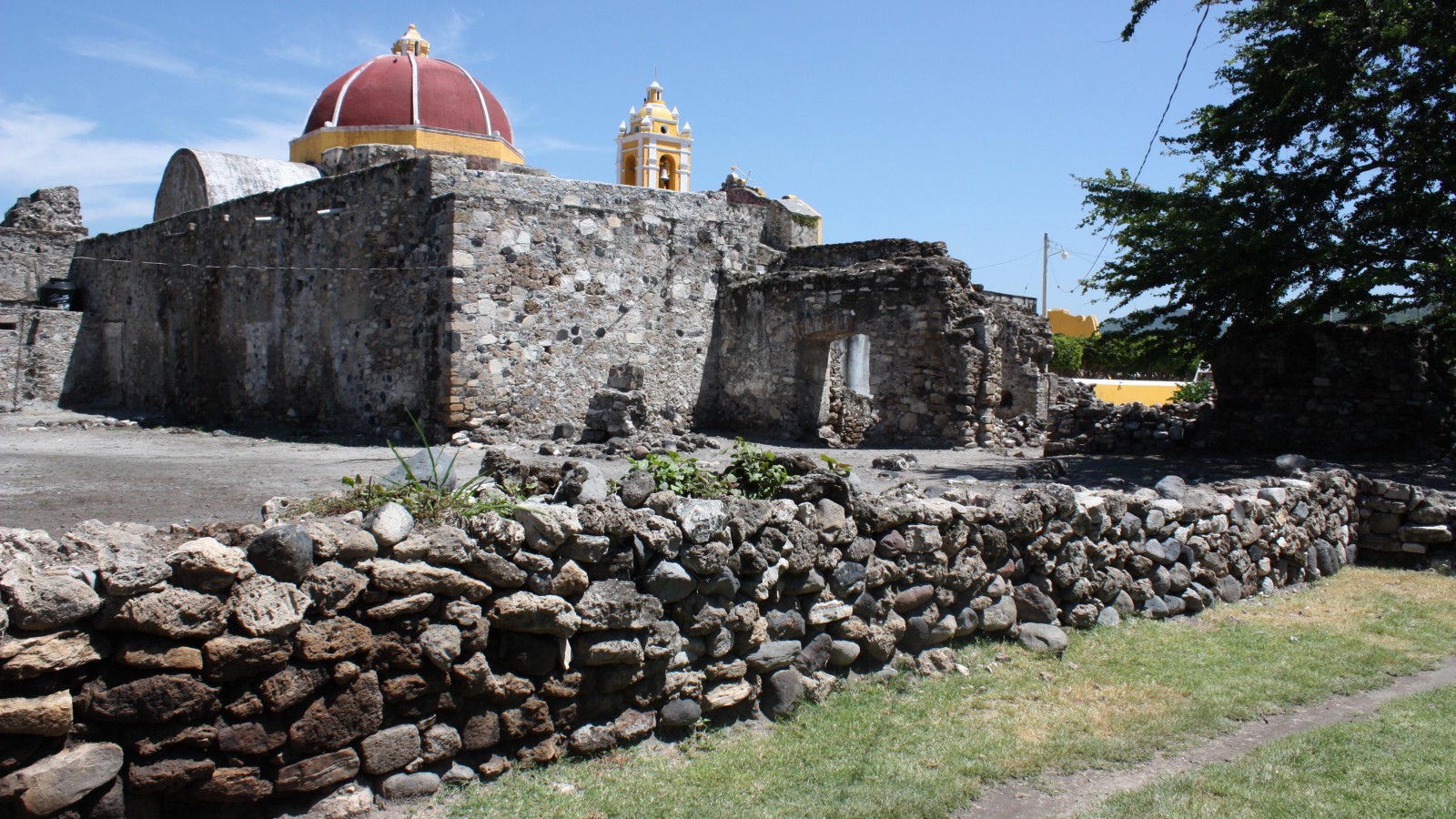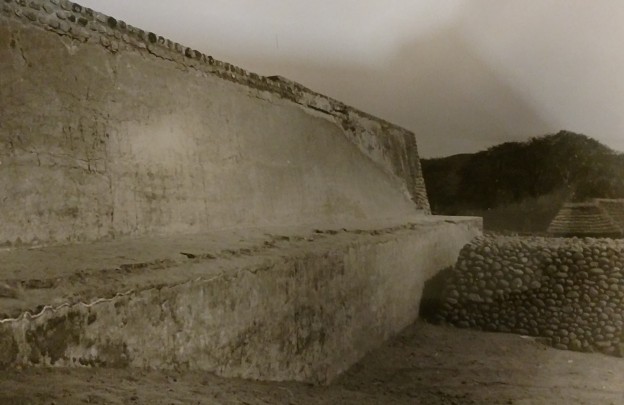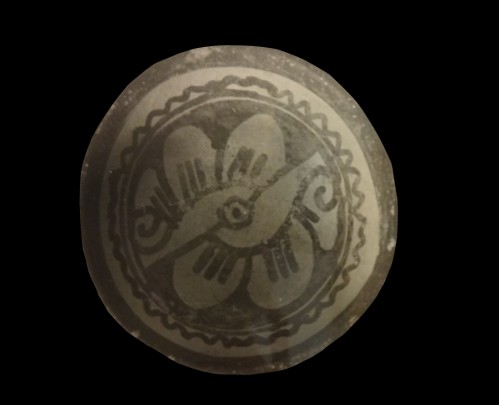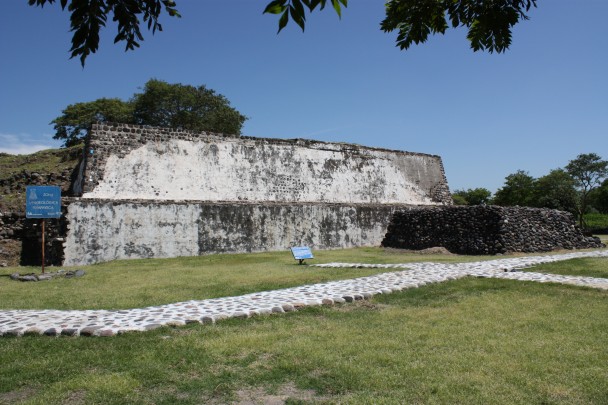Tepapayeca
Enclosed by stone walls
Conquered by the Mexica in the fifteenth century, this site served as a garrison and point of communication with the powerful Itzocan kingdom, on the route to the Mixteca region. The archeological zone occupies a small area, with traces of platforms beneath some nearby houses. A Calvary chapel was constructed over the principal building in the seventeenth century, and parts of these walls remain.
About the site
The name Tepapayeca comes from the Nahuatl and means ‘area enclosed by stone walls’.
This site was occupied in the Late Postclassic period (1200-1521), although centuries earlier the zone had witnessed migrations that led to the consolidation of multiple alliances, while groups such as the Pame-Otomis, Mazatecs, Mixtecs and Popolocas penetrated the region.
Not long before the Conquest of Mexico, the site came under the sway of the Triple Alliance: Tenochtitlan, Texcoco and Tlacopan, with the aim of protecting a trade route of great importance, and to combat incursions by Mixtec groups that sought to assert dominance over the region. The Triple Alliance established a strong garrison at Huaquechula and Tepeojuma, which was assigned the task of putting down uprisings among the subjugated peoples.
In the ancient ceremonial center of Tepapayeca five buildings were constructed, of which today only the remains of the main temple can be seen. They were erected using river stones and mud, the walls clad with cut stone and finished with stucco. The pottery found at the site indicates a close relationship with the Mixtec people, as well as connections to the trade routes from the south-east and the Gulf of Mexico.
In the seventeenth century, with the larger platform already destroyed, the Dominicans built a chapel over the temple dedicated to acts of worship on Good Friday. During the Colonial period, it was common practice throughout Hispanic America to erect Christian religious buildings over former Indigenous sacred sites.
This site was occupied in the Late Postclassic period (1200-1521), although centuries earlier the zone had witnessed migrations that led to the consolidation of multiple alliances, while groups such as the Pame-Otomis, Mazatecs, Mixtecs and Popolocas penetrated the region.
Not long before the Conquest of Mexico, the site came under the sway of the Triple Alliance: Tenochtitlan, Texcoco and Tlacopan, with the aim of protecting a trade route of great importance, and to combat incursions by Mixtec groups that sought to assert dominance over the region. The Triple Alliance established a strong garrison at Huaquechula and Tepeojuma, which was assigned the task of putting down uprisings among the subjugated peoples.
In the ancient ceremonial center of Tepapayeca five buildings were constructed, of which today only the remains of the main temple can be seen. They were erected using river stones and mud, the walls clad with cut stone and finished with stucco. The pottery found at the site indicates a close relationship with the Mixtec people, as well as connections to the trade routes from the south-east and the Gulf of Mexico.
In the seventeenth century, with the larger platform already destroyed, the Dominicans built a chapel over the temple dedicated to acts of worship on Good Friday. During the Colonial period, it was common practice throughout Hispanic America to erect Christian religious buildings over former Indigenous sacred sites.
Practical information
Temporarily closed
Tuesday to Sunday from 09:00 to 17:00 hrs.
Free entry
Se localiza dentro del pueblo de Santa María de la Candelaria Tepapayeca, a 11 km de Izúcar de Matamoros, Puebla.
From the city of Cuernavaca take Federal Highway 160 towards Oaxaca, at km 129 take the turn off for Tlapanala; the site is located 6 km further on.
Services
-
+52 (222) 235 1478, +52 (222) 235 9421
-
This email address is being protected from spambots. You need JavaScript enabled to view it.
-
WWW
-
TWITTER
Directory
Profesor investigador Centro INAH Puebla
Eduardo Merlo Juárez
This email address is being protected from spambots. You need JavaScript enabled to view it.
+52 (222) 213 7390, ext. 298033



















